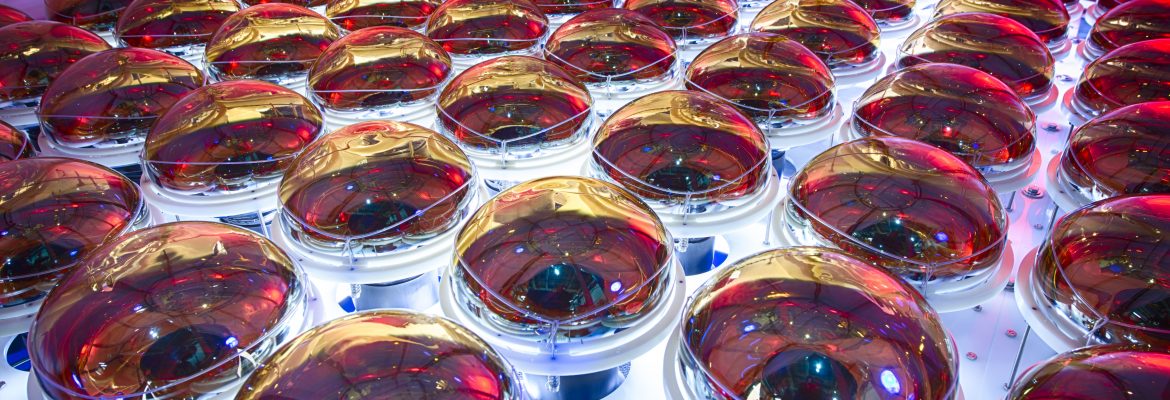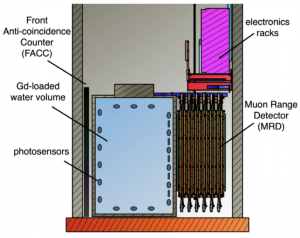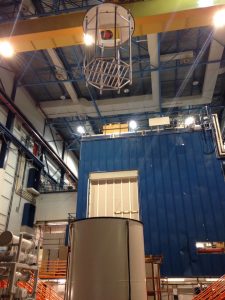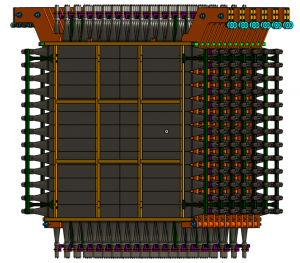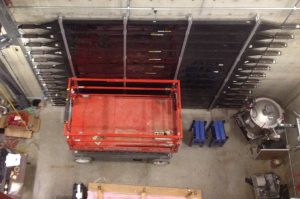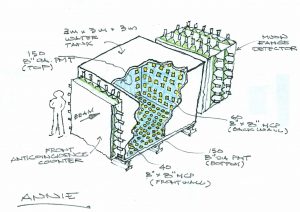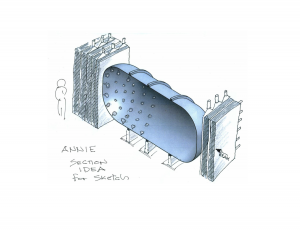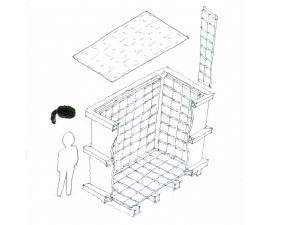Detector overview
The ANNIE detector consists of a 26-ton water Cherenkov detector loaded with gadolinium sulfate (Gd2O12S3), a muon range detector, and a veto wall. Sixty 8-inch PMTs were employed at the bottom of the tank during Phase I to measure the neutron background events. More PMTs (~125) and a few (~5-10) large-area picosecond photodetectors (LAPPDs) will be installed during the Phase II to be able to measure neutrons and reconstruct muon tracks from neutrino interactions in the tank.
The water volume
The ANNIE tank is 10 feet by 13 feet and is filled with about 26 tons (7,000 gallons) of pure deionized water loaded with gadolinium sulfate (GS) and the concentration will be 0.2-0.3% by weight, for a total mass of GS of 52 to 78 kilograms. The saturation concentration is about 2%, so all the GS will remain in solution during the experiment.
Muon Range Detector
The Muon Range Detector (MRD), refurbished from a previous experiment at Fermilab called SciBooNE, is made of 11 layers (vertical and horizontal) of scintillator paddles (306 in total) placed alternatively with 11 layers of iron. It is used to reconstruct the energy and momentum of outgoing muons stopping in the MRD.
The forward veto wall
The front veto counters: 2 layers made of 26 scintillator paddles (two paddles overlapping in each row to provide two-fold coincidences) are used to veto neutrino interactions in the rock (muons not originating in the tank).
Early detector concepts
Here are some early concept drawings of the ANNIE detector. Two top images and bottom right one were drawn by Rich Northrop at the University of Chicago.

